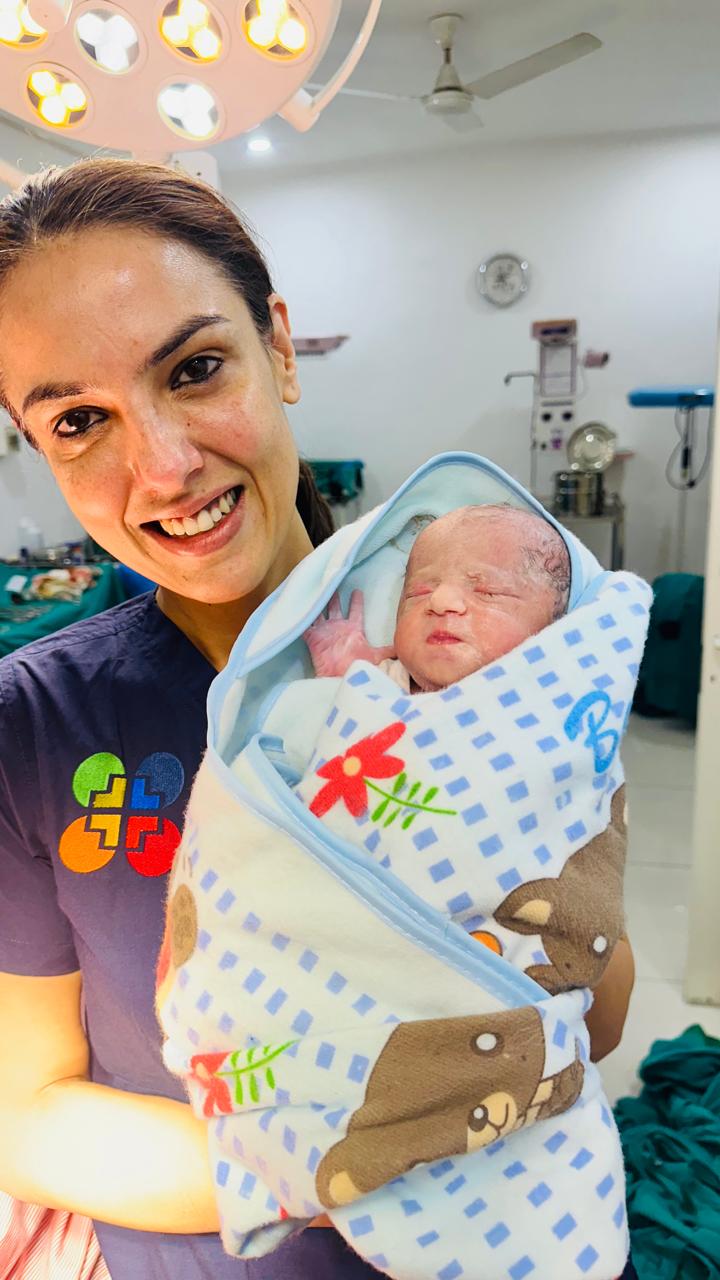What is an Ovarian Cyst?
A part of the female reproductive system, the two ovaries are located in the lower abdomen on both sides of the uterus. They produce eggs as well as the hormones estrogen and progesterone.
Sometimes, a fluid-filled sac called a Cyst develops on one of the women’s ovaries. The Symptoms of ovarian cysts are mostly related to menstrual hormone changes and they usually settle on their own within a few weeks without any treatment.
Most women develop at least one cyst during their lifetime. They usually don’t cause any symptoms and go away on their own.
However, ovarian cysts may sometimes become bigger, not settle on their own or rupture making one need treatment.
Ovarian Cyst Causes
Most ovarian cysts develop as an outcome of the menstrual cycle. The ovaries typically develop small cyst-like structures called follicles in the early stages of every menstrual cycle, when the woman ovulates causing an egg to be released from one of these follicles. A normal follicle that keeps on growing, becomes a ‘functional cyst’. These usually disappear within two or three cycles.
Types of Ovarian Cysts
Functional cysts
Cyst-like structures called follicles are developed by ovaries almost every month. These follicles produce the hormones estrogen and progesterone and release an egg when the woman ovulates.
When a monthly follicle keeps growing, it’s known as a functional cyst. The most common type of ovarian cyst, functional cysts, forms in some women when there is a functional fault with ovulation.
There are two types of functional cysts:
Follicular cyst
An egg grows in a sac called a follicle during the woman’s menstrual cycle. This follicle can sometimes enlarge and fill with fluid around the midpoint of the woman’s menstrual cycle when an egg bursts out of its follicle and travels down the fallopian tube. If the follicle doesn’t rupture or release its egg and continues to grow, the fluid inside the follicle can form a cyst on the ovary called a follicle Cyst.
Corpus luteum Cyst
On releasing its egg, the follicle begins producing estrogen and progesterone for conception and is then called the corpus luteum. Sometimes there is an accumulation of fluid or blood in the follicle, causing the corpus luteum to grow into a cyst. Usually harmless and not pain-causing, the functional cysts often disappear on their own within two or three menstrual cycles.
Other Ovarian Cysts
Other types of cysts are not related to the usual function of the menstrual cycle. These include:
Dermoid cysts
These Cysts tend to occur in younger women and are formed from embryonic cells, the cells which make eggs in the ovary. As an egg can develop into any type of cell, these cysts contain tissue, such as hair, skin or teeth. Though rarely cancerous, these types of ovarian cysts can grow to be quite large.
Cystadenomas
These develop on the surface of the ovary, from cells that cover the outer part of the ovary and might be filled with a watery or mucous material. They are of various types like serous cystadenomas which are filled with a thin fluid or mucinous cystadenomas filled with a thick mucus-type fluid.
Often attached to an ovary by a stalk rather than growing within the ovary itself, sometimes these types of cysts grow very large. Usually benign, they can sometimes be cancerous too.
Dermoid cysts and cystadenomas have the potential of becoming large, resulting in the ovary moving out of position and increasing the chance of painful twisting of the ovary, called ovarian torsion. This twisting may also decrease or stop blood flow to the ovary.
Endometriomas
These cysts develop as a result of a condition in which the endometrial tissue, the tissue that lines the womb grows outside the uterus in a condition called (endometriosis). The treatment for endometriosis, endometriosis, some of the tissue can attach to the ovary and form a growth, resulting in benign cysts.
Polycystic ovary syndrome (PCOS)
Literally meaning many cysts, Polycystic Ovary Syndrome infers the development of a large number of tiny benign ovarian cysts in the ovaries, causing the ovaries to enlarge. As a result of a problem with ovulation, caused by a hormonal imbalance, PCOS is generally linked with period problems, hair growth, obesity, and acne, these cysts can cause infertility if left untreated.
Ovarian Cyst Symptoms
Though most ovarian cysts are small & non-cancerous and cause no symptoms, some ovarian cysts can cause symptoms as they grow. These symptoms may include:
- Pelvic pain- a dull pain or discomfort in the lower tummy (abdomen).
- Irregular periods or periods which are heavier or lighter than usual
- Bloating or swelling especially on the abdomen
- Painful bowel movements
- Pain during intercourse
- Tenderness of breast
- Nausea and vomiting
There are some serious symptoms of an ovarian cyst that indicate the need for immediate medical attention:
- Severe or sharp pelvic pain
- Fever
- Dizziness
- Rapid breathing
These symptoms can be a sign of a ruptured cyst or an ovarian torsion. Both complications require immediate treatment and may have serious consequences not dealt with on time.
Doctor’s Word
Dr. Shivani Bhutani IVF Specialist in Eva Hospital says that Ovarian cysts are quite common in most women but most of them disappear within a few months. However, premenopausal women or women with hormonal imbalances can have recurrent ovarian cysts.
Though Ovarian cysts can’t be prevented, routine pelvic examinations by a competent gynecologist can help to detect any changes in the ovaries or ovarian cysts early. Though ovarian cysts don’t become cancerous, symptoms of ovarian cancer can emulate symptoms of an ovarian cyst. So it is very important to visit the doctor regularly and receive a correct diagnosis.
Following symptoms should be considered an immediate reason to consult the doctor:
- Changes in the menstrual cycle
- Persistent pelvic pain
- Loss of appetite
- Sudden unexplained weight loss
- Abdominal fullness
Read our next blog


















